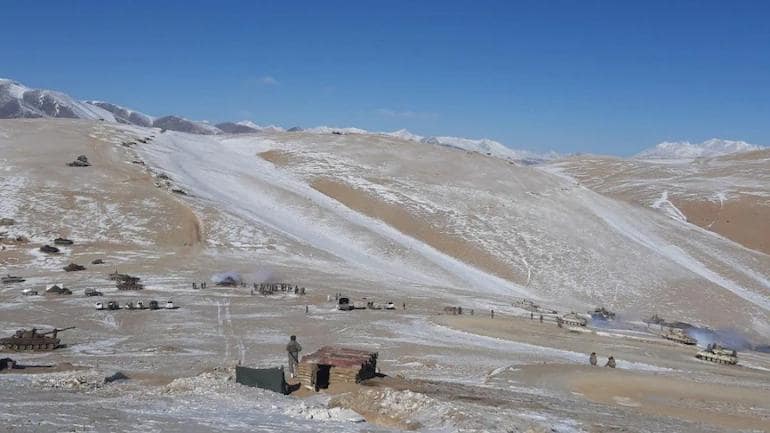Manjeet Negi

Amid the assertion by an American military officer that the situation along the Eastern Ladakh sector was alarming, it is emerging that the Chinese Air Force has more than doubled the deployment of fighter aircraft at its main base near Indian territory.
The Chinese Air Force is operating from its main base in Hotan during the conflict. They are now maintaining around 25 fighter aircraft there. This is much higher than what they used to keep earlier, top government sources told India Today.
Indian agencies are closely monitoring the development and Indian agencies responsible are prepared for any eventuality, they said.
China is also developing a new fighter aircraft base in Shakche which is expected to strengthen Chinese Air Force along the LAC with India. The Indian side feels that Chinese have realised that the Indian Air Force was able to move faster in the conflict zone than them and that is why they have started working on new airbases.
The Chinese People’s Liberation Army Air Force (PLAAF) has upgraded a number of these bases in recent times, including the construction of hardened shelters, the extension of runway lengths and deployment of additional manpower.
Sources said military airbases under Indian watch include three opposite Eastern Ladakh -- Kashgar, Hotan and Ngari Gunsa. The other bases include Shigatse, Lhasa Gongkar, Nyingchi and Chamdo Pangta, the sources added.
mil
US GENERAL REMARKS
The US Army's Pacific Commanding General Charles A Flynn, during his India visit, had raised concerns over the defence infrastructure being built by China along its border with India in Ladakh as "alarming".
Flynn also called the activities of the Chinese Communist Party (CCP) in the Indo-Pacific region "destabilising and corrosive" and said that Indo-US ties were working as a “counterweight to the corruptive behaviour of the Chinese”.
Indian and Chinese troops have been locked in a standoff in eastern Ladakh since May 5, 2020, when a violent clash between the two sides, that resulted in casualties on both sides, erupted in the Pangong lake area. Despite 15 rounds of military talks, tension prevails in the area. The western theatre command of the Chinese People's Liberation Army (PLA) oversees the India-China border.
The Chinese construction that Flynn was referring to came to the fore last month in the strategically important Pangong Tso area. This bridge could help its military to quickly mobilise its troops in the region.
Other Chinese infrastructure, such as roads and residential units, have also come up along the border with India. China is also involved in major maritime border disputes with various countries in the Indo-Pacific region, such as Vietnam and Japan.
Flynn said: "I believe that the activity level is eye-opening and some of the infrastructure that is being created in the (Chinese Army's) western theatre command is alarming." “One must ask 'why does China's military need such arsenal in all domains,” he said.
"So, I do not have a crystal ball to tell you how it (India-China border standoff) is going to end or where we will be at. I will express to you that it is worthy of asking this question and try to get their response as to what are their intentions," he said.
No comments:
Post a Comment